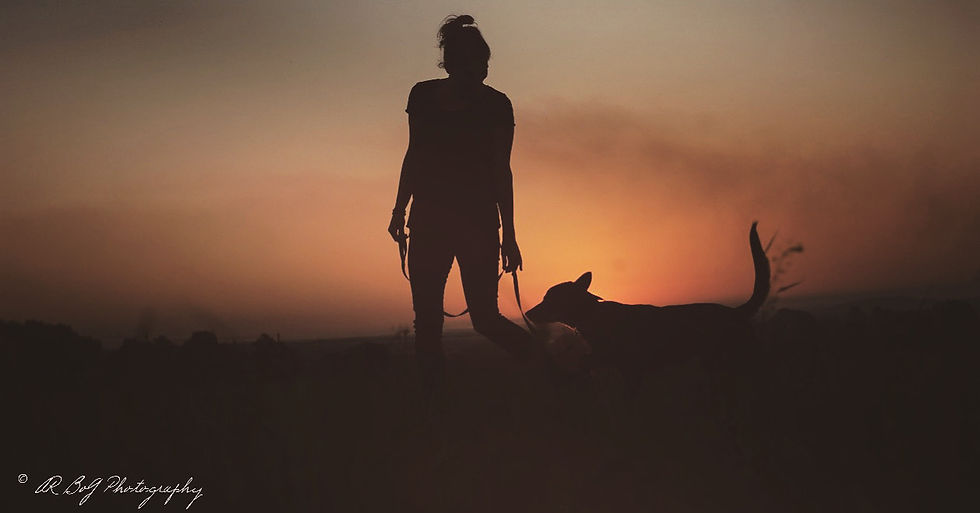Beyond Borders
- Angie Raab
- Jan 27, 2024
- 3 min read
Updated: Jan 16

"Defending elephants and communities on the most Dangerous Anti-Poaching Frontline"
In the unforgiving landscapes where danger lurks, where the clash between conservation and criminality echoes, a mission unfolds—one that stands as a testament to the unwavering dedication of those who become the guardians of giants.
Amidst poachers hiding in the shadows, treacherous land mines, the ominous presence of heavy artillery, bandits, and the looming specter of terror groups, rangers, armed forces, and communities converge on the frontline.
Amidst the chaos, a resounding truth emerges—the ultimate answer lies within the communities. The survival of the iconic desert elephants becomes intricately woven with intelligence work, and collaboration with the local population - a struggle for survival in this war-torn region.
From creating guardianship to providing employment opportunities, the mission is not just about safeguarding elephants but focuses on empowerment, community involvement, and economic sustainability
Rangers and armed forces, standing as the bulwark against the dangers threatening both communities and elephants, provide a shield in the face of conflict. Protection extends beyond the immediate physical threats to encompass the villages, ensuring that their lives and their natural heritage are safeguarded from the perils that lurk. Chengeta Wildlife and the Wild Foundation have collaborated to undertake the mission to train rangers and soldiers, imparting the knowledge needed for th elephants' survival. . The aim is not just protection; it is the creation of an adaptable force capable of facing the challenges head-on, a force that understands the nuanced dance between humanity, conservation, and the giants of the desert. To us, these combined forces, and communities become a beacon of hope—a testament to the indomitable spirit that refuses to bow to the shadows. Because of being able to be part of this mission, I finally recognized that true conservation extends beyond just protection—it actually involves empowering communities to become guardians of their natural heritage- the preservation of the legendary desert elephants; it's a testament to the strength of those who believe that, even in the face of seemingly insurmountable odds, giants can endure. A side note: Contrary to common belief, conservation work is not just about animals; it revolves around the intricate tapestry of communities and individuals. Mali, despite the challenges posed by conflict, remains a breathtaking country with resilient people, and this mission left a mark on my soul. The true essence of conservation became glaringly apparent to me. This mission was a stark reminder that, at its core, conservation work involves people. The animals serve as a poignant reminder of the purpose behind our efforts, but it is the communities and individuals that are the driving force behind our cause. I remember the forbidden music as we navigated dusty roads through villages. The haunting echoes of beautiful songs played, brought forth this sense of defiance. It was a testament to the enduring spirit of a people who refused to let conflict silence their cultural expression.
I remember racing against the elements, the fine grains of sand clinging to our skin. The desert, though unforgiving, held a beauty that mirrored the strength of its people. I remember training sessions echoing with the infectious laughter of children, their eyes filled with curiosity and hope. In these moments spent in a conflict zone, danger and joy coexisted, emphasizing the importance of fostering a sense of normalcy amid chaos. The villagers, with their banter and warmth turned a simple meal into a symbol of hospitality and unity. Forever etched in my memory are nights spent in a remote military outpost under a blanket of stars in the Goma region. Far from the familiar comforts, the song of the vast desert was a reminder of the reasons we were there. This mission in Mali proved to be one of the most fulfilling experiences of my life. It illuminated the profound connection between conservation and community, reminding me that the true heartbeat of our work lies in the resilience, laughter, and indomitable spirit of the people we aim to help while protecting some of the most endangered species on earth. Mali, with its stunning landscapes and extraordinary people, will forever hold a special place in my heart.
Rory Young died in 2021, following his passion to protect endangered species in conflict regions while engaging communities and training rangers. An incredible loss to the conservation world.
(photos: bog photography, Nigel Kuhn)











































Comments